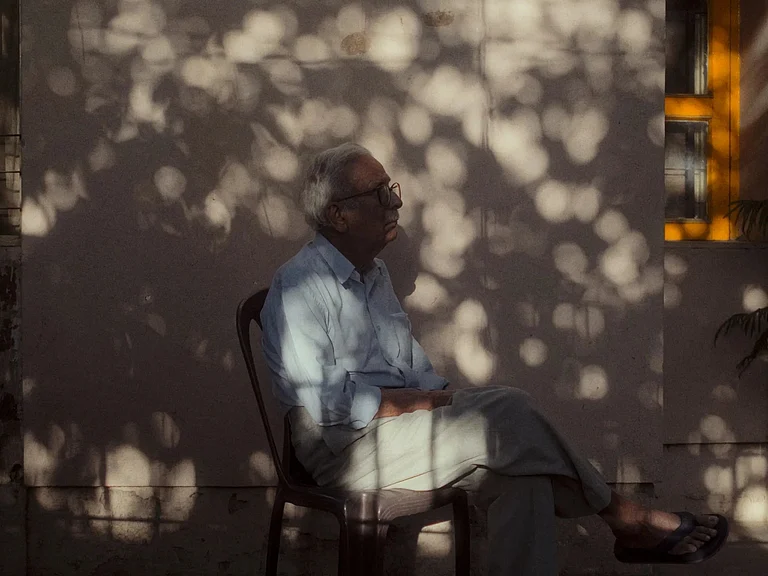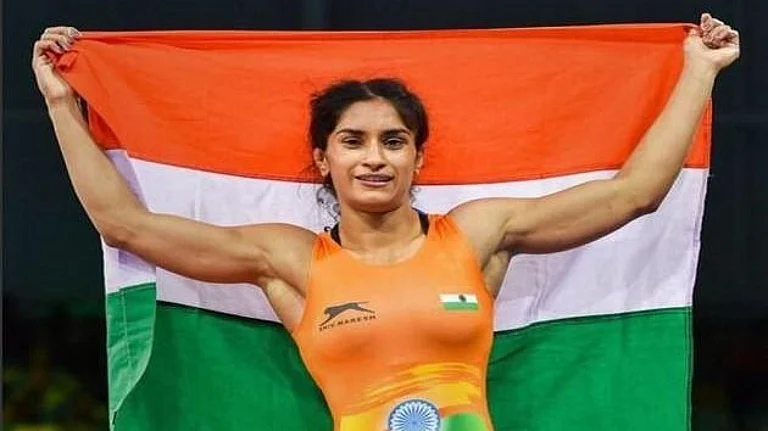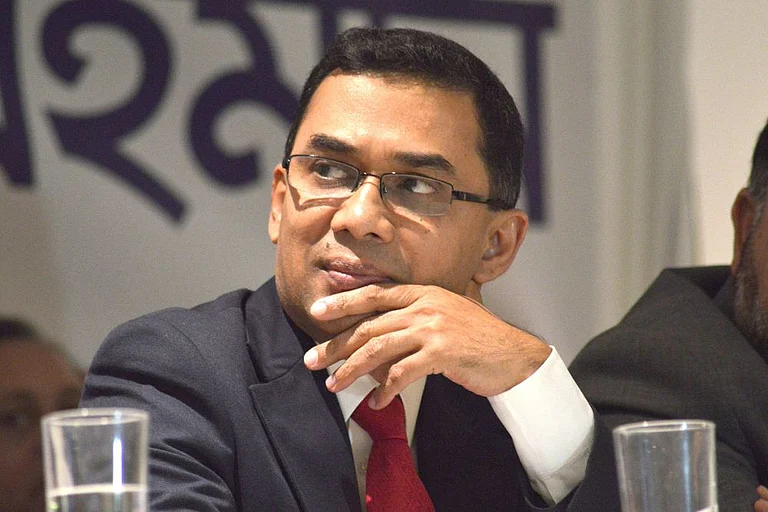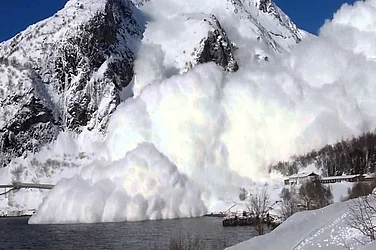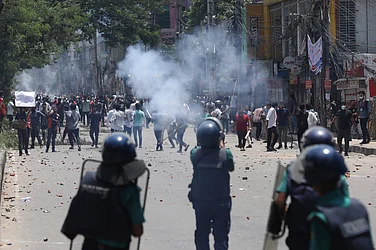From Arvind Kejriwal to Nitish Kumar, the leaders of the Opposition parties are crisscrossing the country and ‘Opposition unity’ is a buzzword.
On the surface, there are factors uniting the various Opposition parties, ranging from the perceived overreach of Centre to the pursuit of Opposition leaders by the investigative agencies. Behind the curtains, however, things might not be the same as they were not the same in earlier attempts at Opposition unity.
This is not the first time that the Opposition parties are trying to come together since the rise of Narendra Modi in 2014. There have been multiple attempts —some successful, some not so successful— in the past nine years.
Less than a year away from the 2024 general elections, we trace the various attempts at Opposition unity so far and see how those worked out.
Grand Alliance, Bihar (2015, 2022)
The Janata Dal-United (JD-U) had parted ways with the Bharatiya Janata Party-led National Democratic Alliance (NDA) over Modi being the prime ministerial candidate for 2014 general elections.
While the BJP won 31 of the 40 Lok Sabha seats in Bihar in 2014 general elections, the BJP was reduced to 53 seats in the 2015 Bihar assembly elections. The emergence of the ‘Mahagathbandhan’ — Grand Alliance — was the reason.
Once bitter rivals, Nitish Kumar of JD(U) and Lalu Prasad Yadav of the Rashtriya Janata Dal (RJD) came together with the Congress party to win 178 of the 243 seats in the Bihar assembly.
However, the Grand Alliance fell apart two years later as Nitish ditched RJD and joined hands with BJP to continue as the Chief Minister of Bihar. Nitish contested the 2020 Bihar assembly elections with the BJP and remained the CM after the alliance won — even though his JD(U) became a junior partner in the coalition with BJP emerging as the single-largest party.
In 2022, however, Nitish ditched BJP and resurrected the Grand Alliance and formed the government in the state with RJD, Congress, and the Left parties. The grand alliance remains an example of how the coming together of a wide coalition can challenge the BJP even when it is the single-largest party.
SP-Congress alliance in Uttar Pradesh (2017)
In 2017, the ruling Samajwadi Party (SP) joined hands with the Congress party for the Uttar Pradesh assembly elections that year.
The common perception was that then-Chief Minister Akhilesh Yadav of SP was looking forward to broadening the party’s Muslim-Yadav support base with backing from Congress. However, that did not happen and BJP went on to win 302 out of the total 403 seats.
The SP camp believed at the time that the supporters of Congress party did not fully transfer their votes to Samajwadi Party where the party’s candidates were fielded.
By 2022, Congress largely became irrelevant in UP and potential allies ditched the party, both, in 2019 general elections and 2022 assembly elections.
SP-BSP-RLD alliance in Uttar Pradesh (2019)
For the 2019 general elections, the bitter rivals SP and BSP came together. The Rashtriya Lok Dal (RLD), with its pockets of influence in Western Uttar Pradesh, was the alliance’s junior partner.
The idea was that the coming together of these parties would stop the division of Muslim votes and combine Dalit and OBC blocs. That did not happen.
The BSP won 10 seats and SP won five; RLD could not win even one. The BJP won 62 seats and its partner Apna Dal (Sonelal) won two.
The internal contradictions of the alliance were too many for its work, according to political experts. A Kannauj-based longtime observer of UP’s politics told this writer at the time that the idea of Dalit and Muslim voters coming together just because SP and BSP have come together was not workable.
“In parts of UP, particularly in this party [in and around Kannauj], the Muslims are often upper-caste whom Dalits have faced the same issues with as they face with upper-caste Hindus. The caste discrimination is similar and the voters and cadres of SP and BSP have clashed for too long to come together now,” said this observer.
The OBC versus SC atmosphere in the state is real, says political expert Kaviraj, when asked about Opposition unity in Uttar Pradesh ahead of 2024 general elections.
“It’s not that only Dalit voters have not supported SP candidates. The OBC voters of the SP did not entirely support the BSP as there is an atmosphere of OBS versus SC. The OBC voters at times feel that an SC candidate cannot represent them and SC voters feel that they cannot side with the OBCs who have harassed them in the past,” says Kaviraj, Professor, Department of Political Science, University of Lucknow.
The Opposition failed to stitch a grand alliance in 2019 as some regional players focussed on a ‘third front’ with N Chandrababu Naidu at the time raising the possibility of regional parties winning enough seats to form the government with Congress as the “anchor party” in a repeat of 1996 — when HD Deve Gowda became the Prime Minister of a similar United Front coalition.
Maha Vikas Aghadi (MVA), Maharashtra
Months after the 2019 general elections, Shiv Sena, Congress, and Nationalist Congress Party (NCP) bridged their ideological gaps to form a “Maha Vikas Aghadi (MVA)” coalition and form the government.
The Shiv Sena and the BJP were allies before the elections and had shared power during 2014-19. The alliance, however, fell apart after 2019 state polls over rotation of the post of chief minister between the two parties.
The MVA alliance too fell apart in 2022 when Sena’s Eknath Shinde rebelled along with most of the MLAs. Uddhav Thackeray resigned as the Chief Minister and Shinde formed the government with his rebel MLAs and with BJP’s support, whose Devendra Fadnavis joined as the deputy CM despite BJP being the senior partner in the coalition.
The Mamata Banerjee formula
To work out the inner contradictions of the Opposition parties, Trinamool Congress (TMC) supremo and West Bengal Chief Minister Mamata Banerjee floated a formula that everyone should support the party in their pockets of influence.
The development came after a series of meetings between Opposition leaders and the Congress victory in Karnataka, which appears to have boosted the confidence of fellow Opposition parties in Congress.
In recent months, Nitish Kumar of JD(U) has toured the country to meet regional leaders and earlier K Chandrashekhar Rao had done the same. After the Centre came up with an ordinance to override the Supreme Court order over control of services in Delhi, Aam Aadmi Party (AAP) convenor and Delhi CM Arvind Kejriwal has made similar rounds across the country.
In such a backdrop, Mamata floated her formula and finally appeared to have opened doors for a coalition with Congress — something she had had so far not been open to.
Citing several examples, such as of SP-RLD in UP, Congress-Jharkhand Mukti Morcha (JMM) in Jharkhand, and Congress-DMK in Tamil Nadu, Mamata said that the Opposition should support parties wherever they are strong. However, she also said that while she supports Congress in Karnataka and elsewhere wherever it’s strong, the Congress too should extend similar support to other regional parties.
“In this situation, Whoever is strong in some place, in their region, they should fight together. Let's take Bengal. In Bengal, we [Trinamool] should fight. In Delhi, AAP should fight. In Bihar, they are together. Nitishji [JD-U], Tejashwi [RJD], and Congress are together. They will decide. I cannot decide on their formula. In Chennai, they [DMK and Congress] have a friendship and they can fight together. In Jharkhand also, they [JMM-Congress] are together and in other states also. So it is their choice,” Mamata was quoted as saying.
Mamata also said that Congress is strong in around 200 seats and she would support the party in those seats.
Can 2024 be different from 2019?
Despite attempts at alliances and issues such as a slowing economy and corruption allegations, the BJP under Modi not only won but improved its tally in 2019 general elections. Can 2024 be any different?
Political expert Kaviraj of University of Lucknow says the coming together of a Mahagathbandhan-like alliance can turn the tables, at least in Uttar Pradesh.
He tells Outlook, “If the Opposition puts one candidate against the BJP, then all the non-BJP voters would converge on that candidate. In any case, the BJP’s vote share is at a maximum of 40-45 per cent, which means the Opposition still has 50-55 per cent vote share that, if it puts one joint candidate, it can secure.”
As for the role of Congress in any Opposition alliance, Kaviraj notes that while it’s certainly not a player in UP, it’s the main player along with BJP in Rajasthan, Madhya Pradesh, and Chhattisgarh and “it’s enough to face the BJP there on its own”.
Elsewhere, however, regional parties are paramount, such as in Bihar.
Two factors are also at play in the run-up to 2024 general elections that were not there in 2019. One is the Bharat Jodo Yatra of the Congress party led by Rahul Gandhi and the second is the distance of Rahul and the Nehru-Gandhi family both from the Congress leadership and electoral politics.
As of now, Rahul is not an MP after being convicted in the defamation case and sentenced to two years. If the higher courts do not overrule his conviction or reduce his sentence, then Rahul, as per the law, remains disqualified from electoral politics for eight years. This means that regional players opposed to Gandhi at the helm of any coalition government are at ease.
“Now that Rahul Gandhi is disqualified from contesting elections, the Opposition parties also do not have any issue on that front [Gandhi being PM face]. They can prop any suitable leader, perhaps even Kharge, as the PM face. The BJP too has criticised the Congress and the Opposition for all these years by mocking Rahul, who has been the face of the Congress for all these years. Now as Rahul is no longer in the picture, that mockery is also not in the picture. The disqualification of Rahul can actually help the Opposition this way,” says Kaviraj.
Kaviraj also notes that the speculated West-East Bharat Jodo Yatra can also add to the fervour in Opposition’s favour.
“Uttar Pradesh remains the centre of politics in Hindi-speaking North India. If the West-East Bharat Jodo Yatra gets support in UP, then Congress would also get support in other Hindi-speaking states of Rajasthan, Bihar, and Madhya Pradesh. It would also get Congress support for a broader coalition against BJP as we have already seen Mamata and Chandra Shekhar supporting Congress after Bharat Jodo Yatra and Karnataka,” says Kaviraj.
Since the 2019 general elections, Modi government has faced massive protests, such as the violent protests over Citizenship Amendment Act (CAA), year-long farmers' agitation, and the ongoing protests by wrestlers that have again attracted farmer groups. Much of civil society has also been critical of various policies of the Modi government, which was also reflected in Bharat Jodo Yatra which was joined by civil society members and apolitical personalities. But is it enough to unseat Modi? The Opposition would want to think so. By now next year, we would know the answer.







